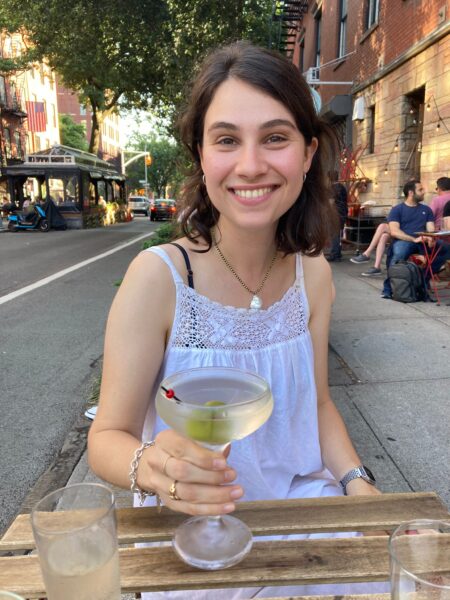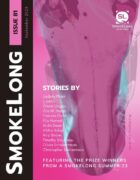The two characters in “The Museum” interact at an exhibit of two Neanderthals taxidermized behind glass. How are you interrogating the relationship between humans and history in this flash?
I have always been deeply confused by the idea of time. It took me longer than it should have to learn days of the week and to understand how to read a clock. I remember very clearly the moment I understood time as a child, and it was like being locked into handcuffs that I still haven’t taken off. In this piece I wanted to think about how we use time to narrativize reality, to make sense of the world and our place in it. The narrator has decided she doesn’t want any part of the procession of time marching forward, and that the story we’re telling about past/present/future doesn’t make any sense. What happens when you lose your footing in time? What happens when you don’t feel there’s any sense to being in the world? What happens when you lose the plot?
The girl and the narrator call the same things by different names—nanthals and Neanderthals, sleep appendix and apnea—but they still understand each other. How are you reframing communication in this flash?
I’m interested in the slipperiness of language. I think my love of writing came first actually from a love of words rather than stories. Something I love about speaking with children is that their understanding of words is so new and imaginative and expansive. In this piece I was thinking about how inadequate words are as a tool of expression, but they’re all we have. And we just make it work. It’s extremely imperfect—here the child says it one way, the adult says it another—and we manage to come to an understanding in the middle, somehow (sometimes). The coming together in the middle is the beautiful thing.
In a gorgeous monologue, the narrator describes her evening walk by “taxidermied models of real houses,” transformed “like the museum of something.” You employ “this” to begin many phrases here: “This is a window pane,” or “This is the white paint.” Can you speak to the effect of pointing to things, leading to the narrator’s “feeling of terror”?
Things carry so much life. They emanate all their history—where they’ve been, who they’ve been with, the historical conditions in which they were created and through which they have survived. We don’t think so much about that unless the thing is in the museum, this sacred space that makes it untouchable. But the whole world is full of things just like that, and when you think about the weight of all the lives and stories carried in these things surrounding you, it’s overwhelming. The museum is curated, it’s neat, it’s safe. I wanted to show that juxtaposition—what if you saw the world like a museum, everything a perfect specimen, an ideal example, a chapter written into the story? But the real world is unpredictable, messy, overcrowded—and that can sometimes be terrifying.
The narrator’s goal is to ruin her life, by “trying to pay more attention to what feels good.” Simultaneously, she wakes crying, “… the way people cry when they have a revelation.” Her awakening on the page is both pleasurable and shattering. What is ruined, then, in the end?
I think this stemmed from the basic idea that what feels good to you may not feel good to all the people around you. In certain cases what you want to do may cause others pain, but not doing it will cause you pain. How do you square that? Whose pleasure matters more?
One last fun question: Are there any museum exhibits that have influenced your work?
Oh, tons! I love museums and I love the history of museums. What a fascinating idea to get objects together in a particular place in a particular way to tell a particular story. The knowledge and narratives that come from the museum are not given: they are constructed. It’s a space of ordering, dictating, telling. But how we tell says so much about us. It’s one of the few places where you can see into the machine, watch the gears of history—making happen.
Here’s an exhibit—I saw The Melancholy Museum created by the artist Mark Dion at Stanford last year. It’s a giant cabinet of curiosities that tells the story of the Stanford family and the death of their son through personal objects in the museum’s archives. Each drawer has a set of objects that are carefully juxtaposed, and you get to open them one by one. They’re so evocative. I think I just love how powerful a story can be told through things. It makes me wonder if we even need words.



 The core workshop of SmokeLong Fitness is all in writing, so you can take part from anywhere at anytime. We are excited about creating a supportive, consistent and structured environment for flash writers to work on their craft in a community. We are thrilled and proud to say that our workshop participants have won, placed, or been listed in every major flash competition. Community works.
The core workshop of SmokeLong Fitness is all in writing, so you can take part from anywhere at anytime. We are excited about creating a supportive, consistent and structured environment for flash writers to work on their craft in a community. We are thrilled and proud to say that our workshop participants have won, placed, or been listed in every major flash competition. Community works.